One of the mystery in our synthetic tomography test is the data misfit shown by the joint inversion of local and teleseismic sources. In summary, inversion of local and teleseismic earthquakes individually shows a good data misfit for 600+ sources each, which is not reflected in the joint inversion using the same sets of sources.
In this post we perform the simplest case of joint inversion using one source each and with no regularization to examine the aforementioned observation. For the local inversion we use one event from central North Island, while the teleseismic source is an event in the Sumatra subduction zone.
- local source
- teleseismic source
local
Of the local source, eight iterations of inversion step shows that the root-mean-squared residual misfit decrease significantly from 212 to 0.31 ms.
The associated model recover a pair of checker-board cube around 37 S/175 E.
- initial checker-board depth slice
- recovered checker-board at 18 km
- initial checker-board EW slice
- recovered checker-board at 36.85 S
- initial checker-board NS slice
- recovered checker-board at 174.75 E
teleseismic
Similarly, eight iterations of the teleseismic source inversion shows that the rms residual decrease from 191 to 0.71 ms.
The recovered model is highly smeared especially in the EW direction. However it can still resolve patterns at shallow depth <30 km.
- initial checker-board depth slice
- recovered checker-board at 18 km
- initial checker-board EW slice
- recovered checker-board at 36.85 S
- initial checker-board NS slice
- recovered checker-board at 174.75 E
joint
The ray-paths projected shows that the paths of the two sources are hardly overlapped.
- depth slice at 18 km
- EW slice at 36.85 S
- NS slice at 174.75 E
Eight iterations of the joint inversion shows that the misfit is reduced as well as the two individual cases (rms residual from 202 to 0.43 ms).
The resulting model recover three boxes of checker-board pattern at shallow depth beneath the AVF, improving from both local and teleseismic inversion by increasing the depth penetration and lateral recovery.
- initial checker-board depth slice
- recovered checker-board at 18 km
- initial checker-board EW slice
- recovered checker-board at 36.85 S
- initial checker-board NS slice
- recovered checker-board at 174.75 E
This outcome tells that fundamentally the approach works as we expected. Next we test whether the addition of numerous sources and/or the usage of regularization contribute to the high misfit of the data.
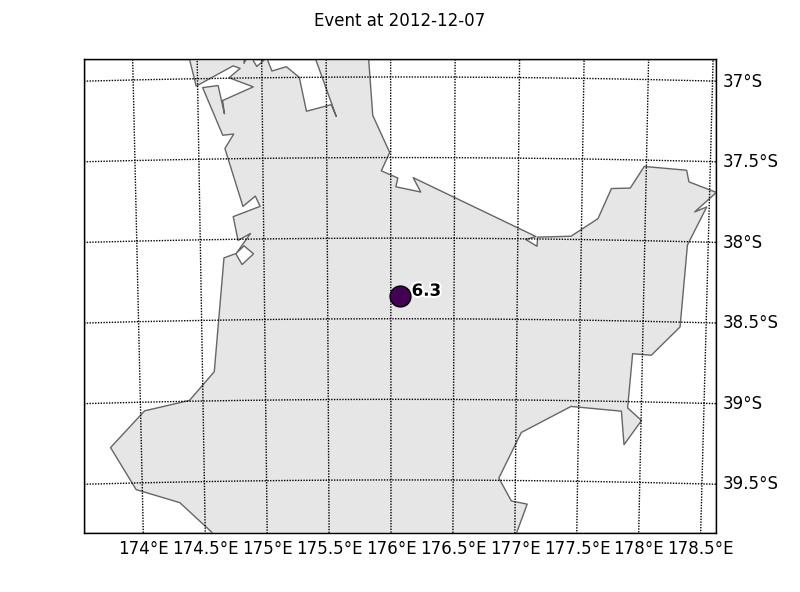
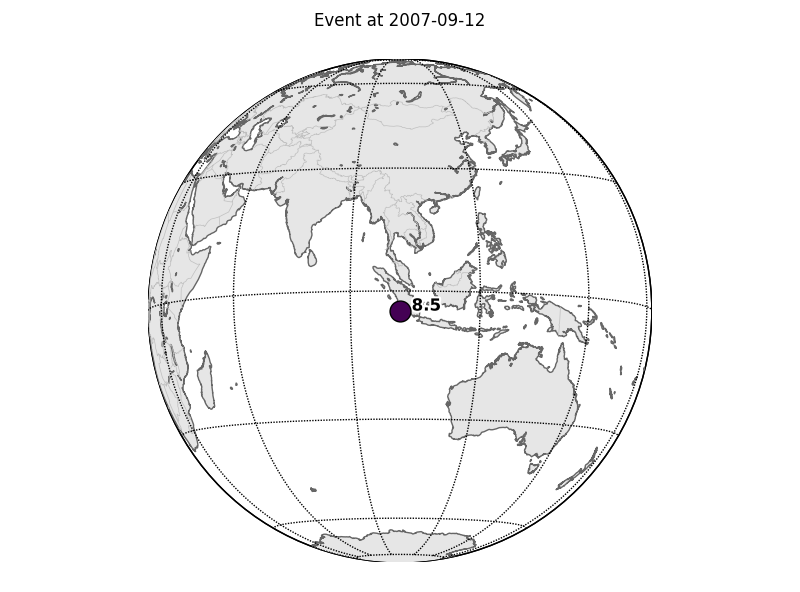

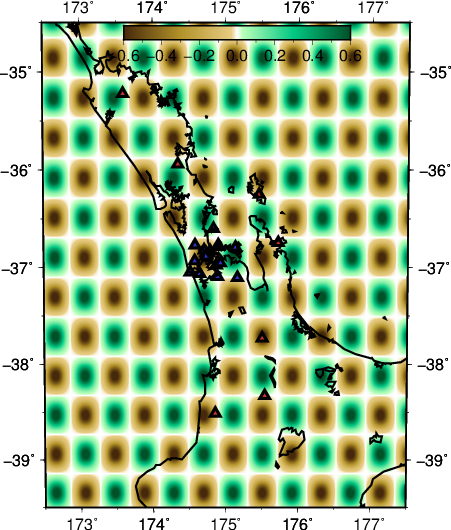
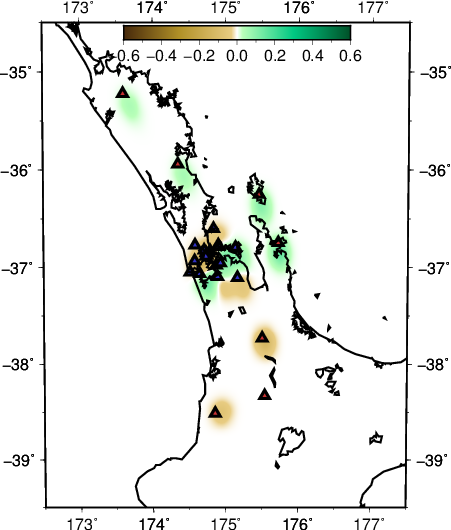

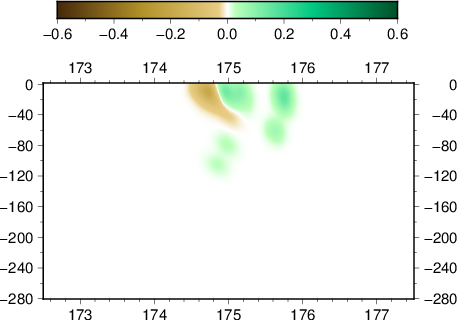
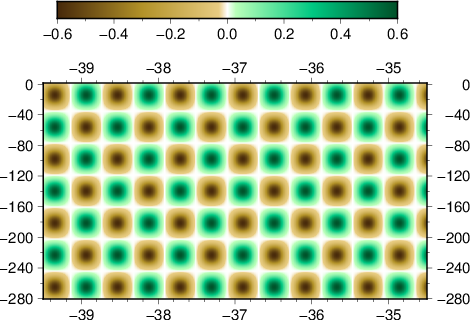
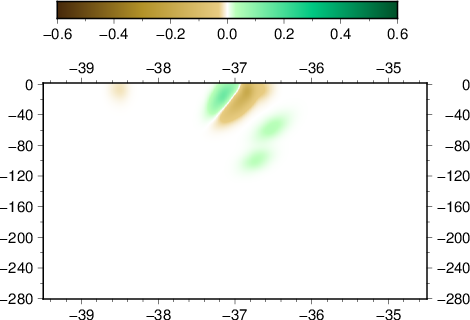
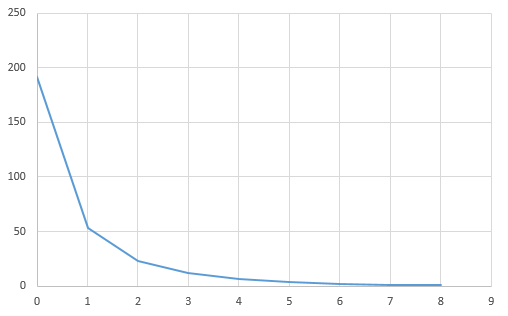

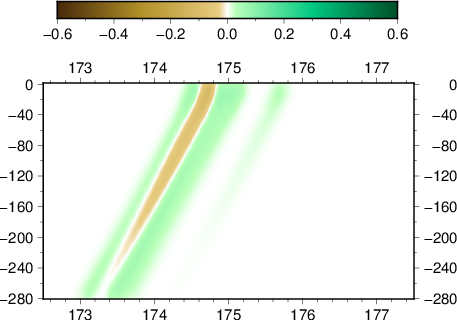
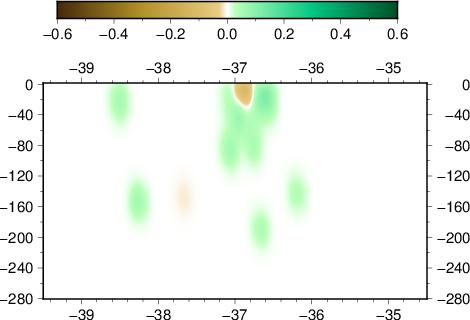
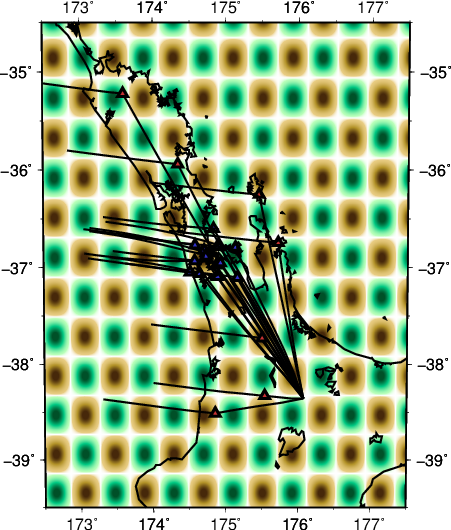
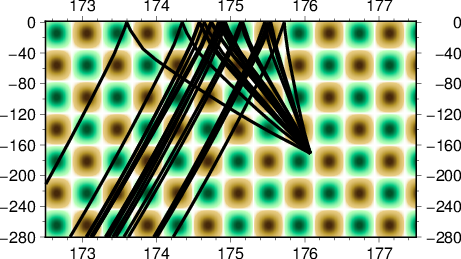
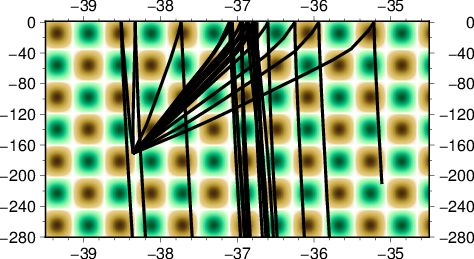

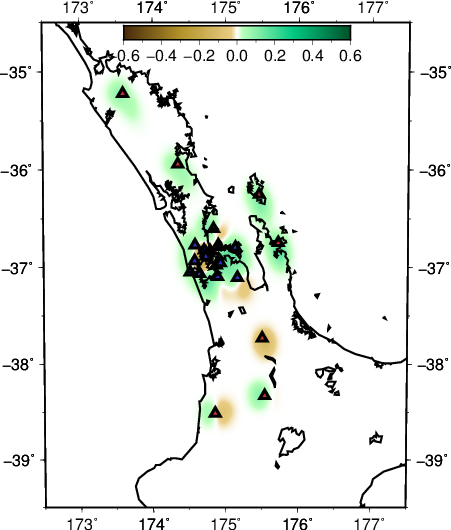
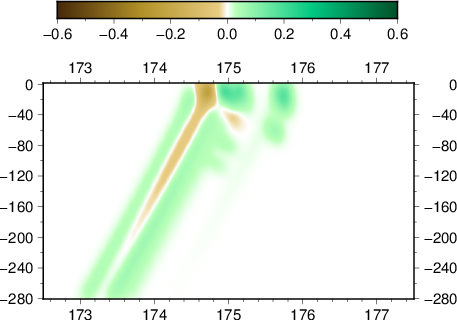
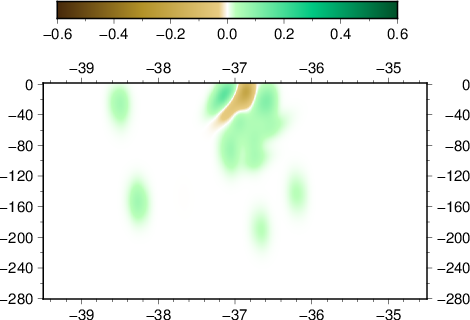
Comments are closed.